I woke when the boy came through the window. He looked about eight, all dark eyes in a brown face.
“Don’t touch the floor,” I said.
He startled. “Why not?”
“The monster under my bed will get you.”
He relaxed. “I’m too old to believe in monsters. You need a better lock for your window. And bars. Everybody in the neighborhood has bars.”
I tried to imagine bars on the window. Would it be more a prison?
“It’s not safe for you here. You need to go home.”
He shrugged, settling cross-legged on the dresser below the window. “My parents are fighting. I’ll go home in a few hours.”
It was dark outside. It was always dark when I woke. “What’s your name?”
“I’m Carlos. I’m the youngest. What’s yours?”
“I’m Jane. I’m the youngest, too.” Or I had been.
Carlos swung his legs. “You don’t talk like you’re from Boston.”
“I’m not, originally.” Was Boston even in England? Where had my curse taken me?
“What’s on your leg?” He hopped to the floor, and I cried out. Fürst rumbled from under my bed, and Carlos jumped back onto the dresser. “What was that?”
“I told you.” I swallowed hard. “You need to go, now, Carlos. This isn’t a safe place for you.”
He opened his mouth, and one green claw came out from under the bed. It could have encircled a cantaloupe, or a man’s head.
“Go,” I repeated, and he went, out into the night.
I slept.
**
I woke when the man entered the window. Moonlight glinted against a knife in his hand. He slipped to the floor and Fürst slid out from under the bed, scales glinting green. Fürst unhinged his jaw, grasped the intruder with his claws, and swallowed him whole. The knife clanged against the floor, but the man never had a chance to scream.
I slept.
***
I woke when the boy came through the window. It was Carlos, grown older.
“I thought perhaps I dreamed it all, but you’re still here. I don’t think you’re any older. Is the monster still here, too?”
There was a tiny rumble from Fürst under the bed, and I smiled reluctantly. “You shouldn’t have come back.” I hesitated, fighting curiosity. “How long has it been?”
“Four years.” He leaned forward, carefully. “There was something around your leg. I tried not to remember that, but I did.”
I shrugged. “There’s a monster under my bed, and you’re worried about my legs?”
He looked at me with the straight look I remembered. “It looked like a chain.”
I sighed. “It is a chain, Carlos. It’s mostly for show; I’m only awake when someone enters the room, and Fürst won’t let me leave the bed.”
His brow wrinkled. “Fürst?”
“It means Prince. My guardian, my jailor…my monster.”
He nodded as though that made sense.
“I’ll be back,” he said, turning to go.
“You sho—” I began, but he was gone.
I slept.
***
He was older again. He tossed me a small cloth bag.
“They’re lock picks. I’m going to teach you how to use them.”
I blinked. “Why?”
He shook his head. “Chica, it’s easier to get out if you’re not chained.”
I looked at the bag, at him. “How long?”
“Another four years. I had to learn how, so I could teach you.”
“Will you be hanged, if you’re caught with these?”
Carlos shook his head. “We’re not much on hanging people.”
He demonstrated the picks and I struggled to mimic him. The lock resisted my best efforts, but he only nodded. “I’ll be back,” he said again.
I slept.
***
The next few times he brought me locks to practice with. When I conquered the easiest, he replaced it with a harder one, and one harder still. I noted that his clothing changed—light clothing to heavy, then to light again. A mustache had grown in on his upper lip, then a small beard. He was man now, not boy.
The night that I opened my manacle he carried a leather bag. I stared at my free ankle. “Now what?”
“Will Fürst hurt you, if you touch the floor?”
“No, he’ll just carry me back to the bed.”
“Good.” He opened the bag, pulled out a hammer. “Catch.”
I caught it, then a box of nails. Last he sent the edge of a rope ladder. “You’ll need to nail this into the bed frame to anchor it.”
He demonstrated and I mimicked him, nail after nail. When I pushed against it, it held my weight.
Carlos waited as I pulled myself up onto it. A step, two—I slipped, and my foot brushed the floor.
Fürst erupted, tail lashing, and gathered me up in his great claws. I smelled carrion on his breath as he set me gently onto my bed. My prison.
I was angry, suddenly, and barely waited for Fürst to settle before starting again. One step, two, three, four. I slipped but held on grimly, regaining the rung with my bare foot. Five, six, seven…then Carlos caught my hand. I scrambled up beside him onto the dresser, then up, out, through the open window.
The night was cold but brilliantly lit with balls of fire perched on metal trees. Carlos closed the window behind us and led me to a strange low carriage without horses.
“Where are we going?” Should I have asked before? Did I even care?
“To my mother’s apartment. Mom always told me a woman didn’t need a prince to rescue her. She needed a friend, to help her rescue herself.” He grinned. “You already had a Prince, and he didn’t look like a keeper to me.”
No kiss, no guarantee that there would ever be one. No castle, no piles of gold. I sighed happily as he helped me into the carriage.
© 2015 by Hope Erica Schultz
Author’s Note: Boston is, to me, the natural setting for fairy tales in America. The old brownstones look timeless, as though they have seen centuries pass. (They have.) Many have basement windows, and most of these have wrought iron bars across them. To my younger mind, they looked like prison cells, sinister and strange. It was the perfect place for Jane’s story to unfold.
 Hope Erica Schultz writes Science Fiction and Fantasy for teens and adults. Her stories have appeared in Fireside Magazine Issue 18, Siren’s Call Issue 13, and the YA anthology Stepmothers and the Big Bad Wolf. When not reading, writing, tramping through the woods, or pretending to be someone else, she keeps busy at 1 1/2 jobs, a happily chaotic family, one dog, four cats, and a flock of wild turkeys who think they own the back yard. Follow her on Facebook at www.facebook.com/hope.schultz.14 and at her website.
Hope Erica Schultz writes Science Fiction and Fantasy for teens and adults. Her stories have appeared in Fireside Magazine Issue 18, Siren’s Call Issue 13, and the YA anthology Stepmothers and the Big Bad Wolf. When not reading, writing, tramping through the woods, or pretending to be someone else, she keeps busy at 1 1/2 jobs, a happily chaotic family, one dog, four cats, and a flock of wild turkeys who think they own the back yard. Follow her on Facebook at www.facebook.com/hope.schultz.14 and at her website.
If you enjoyed the story you might also want to visit our Support Page, or read the earlier story offerings:
DP Fiction #1: “Taste the Whip” by Andy Dudak
DP Fiction #2: “Virtual Blues” by Lee Budar-Danoff
DP Fiction #3: “In Memoriam” by Rachel Reddick
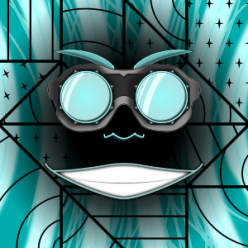
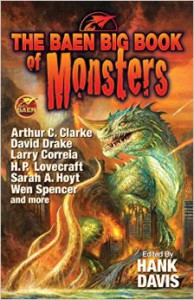

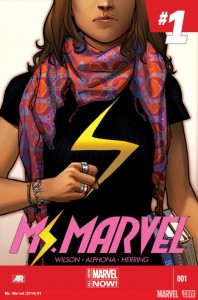
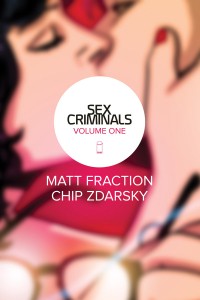 2.
2. 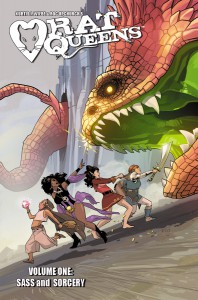 3.
3. 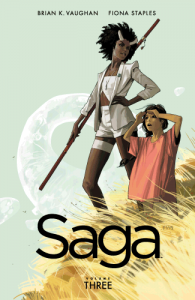 4.
4.  1. Edge of Tomorrow, Screenplay by Christopher McQuarrie and Jez Butterworth and John-Henry Butterworth (Warner Bros. Pictures)
1. Edge of Tomorrow, Screenplay by Christopher McQuarrie and Jez Butterworth and John-Henry Butterworth (Warner Bros. Pictures) 2. Interstellar, screenplay by Jonathan Nolan and Christopher Nolan, directed by Christopher Nolan (Paramount Pictures, Warner Bros. Pictures, Legendary Pictures, Lynda Obst Productions, Syncopy)
2. Interstellar, screenplay by Jonathan Nolan and Christopher Nolan, directed by Christopher Nolan (Paramount Pictures, Warner Bros. Pictures, Legendary Pictures, Lynda Obst Productions, Syncopy) 3. The Lego Movie
3. The Lego Movie 4.
4.  5. Captain America: The Winter Soldier
5. Captain America: The Winter Soldier
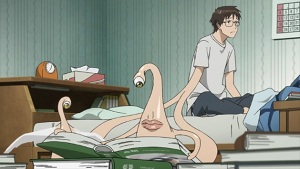 Though I have a lot of affection for Parasyte, my experience is colored by having been a huge fan of the manga for years. I recognize that adaptations need to make changes and that doesn’t bother me. There are some things that I think were improved by having done so, but at the same time, there are others that absolutely did not bother me in the manga that just felt flat when translated into the animated medium.
Though I have a lot of affection for Parasyte, my experience is colored by having been a huge fan of the manga for years. I recognize that adaptations need to make changes and that doesn’t bother me. There are some things that I think were improved by having done so, but at the same time, there are others that absolutely did not bother me in the manga that just felt flat when translated into the animated medium. Laurie Tom is a fantasy and science fiction writer based in southern California. Since she was a kid she has considered books, video games, and anime in roughly equal portions to be her primary source of entertainment. Laurie is a previous grand prize winner of
Laurie Tom is a fantasy and science fiction writer based in southern California. Since she was a kid she has considered books, video games, and anime in roughly equal portions to be her primary source of entertainment. Laurie is a previous grand prize winner of 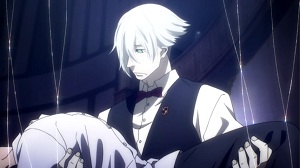
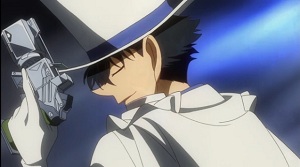 Magic Kaito 1412 is a largely episodic series centered around the adventures of Kaito Kuroba, a high school junior who moonlights as a gentleman thief to thwart the people responsible for the death of his father, the original Kid the Phantom Thief.
Magic Kaito 1412 is a largely episodic series centered around the adventures of Kaito Kuroba, a high school junior who moonlights as a gentleman thief to thwart the people responsible for the death of his father, the original Kid the Phantom Thief.